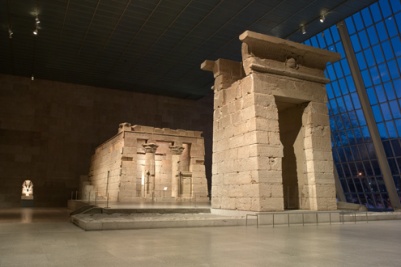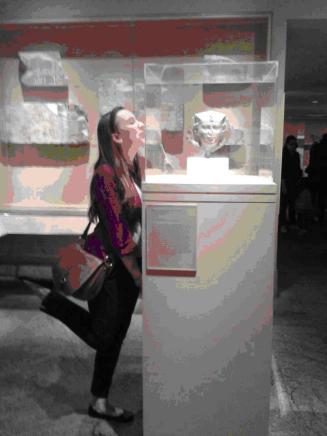This August, Ancient Egypt will experience a stellar comeback. Literally. In just a few weeks, the spacecraft “Rosetta”, launched in 2004, will reach its destination—the comet 67P/Churymov-Gerasimenko, and be delivered to its lander, “Philae” on the surface of the comet! On March 20-21st, scientists noted (through an OSIRIS wide-angle camera….Osiris—get it?) that Rosetta was right on track for its arrival.
In addition to the fact that a spacecraft being able to land on a comet is just about the coolest thing EVER, the connection to Ancient Egypt makes this particular mission even sweeter!
The spacecraft Rosetta is named after the famous Rosetta stone, an ancient artifact currently housed at the British Museum. According to the museum’s records, the Rosetta stone is from the Ptolemaic Period of Ancient Egypt (around 196 BC) and is an inscribed decree passed by a council of priests. The true value of this artifact is found in the carved text where the council’s decree is inscribed three times: once in Hieroglyphs (the older language almost exclusively used by the religious at this point in history), once in Demotic (daily script of Egyptians in the period), and once in Greek (the language of the administration)
 (courtesy of the British Museum)
(courtesy of the British Museum)
When the stone was initially discovered by Napoleon’s army in 1799 in the town of el-Rashid (Rosetta), no one could decipher the hieroglyphic texts. However, an English physicist, Thomas Young, was the first to realize that some of the hieroglyphs on the Rosetta stone spelled out the royal name Ptolemy. Using this knowledge, the French scholar Jean-Francois Champollion, who was fluent in Coptic and Greek, was then able to uncover the connection between Greek, Coptic, and Demotic! His work was the catalyst to the formation of our understandings of all hieroglyphic texts.
And what about Philae? The Rosetta spacecraft’s lander is named after an obelisk found on the Nile island of Philae. This obelisk, much like the Rosetta stone, contains texts in both Greek and ancient Egyptian hieroglyphs, and was utilized as a comparative “document” by Champollion and other scholars as they translated the ancient Egyptian language. In particular, scholars were able to identify the hieroglyphic spelling of Cleopatra and her family name Ptolemy through these two objects, providing a breakthrough that changed the landscape of Egyptology by providing a kind of “skeleton key” to the long misunderstood language of the ancient culture.
In regards to our space mission, scientists are hoping that the spacecraft Rosetta and the lander Philae will function in the same way as their ancient counterparts, allowing scientists to discover previously unknown facts about the earliest years of the Solar System, when the planets were not yet formed and only comets and asteroids surrounded the sun.
As of June 20th, the spacecraft Rosetta was just under 160,000 km away from the comet and from meeting the lander Philae. Although scientists are unsure of how successful the mission will be, we will hope for history to repeat itself, and for Rosetta and Philae to hold their title as a team that opens the door to the ancient world…and beyond!
Sources:
http://www.britishmuseum.org/explore/highlights/highlight_objects/aes/t/the_rosetta_stone.aspx







Recent Comments